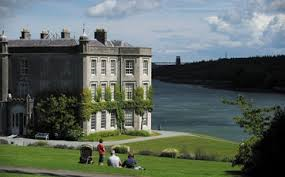The National Trust is indeed a National Treasure. The work they do encompasses the conservation and protection of nature reserves, castles, many historic houses, villages, forests and farmland. Their work is endless and vital. When we visit many of these amazing places, we rarely have any inkling of the amount of work, research and effort that goes into some of the most difficult situations the UK faces… protecting our coastlines for example, is like trying to hold back the sea, and yes it can be done if you want to talk hard and soft engineering.
Energy and the Environment
The Trust is committed to using renewable energy (our favourite kind of subject) and one of the projects has been the installation of a hydro turbine in Snowdonia which, with 1 mile of pipe and around 6 tonnes of steel will generate in the region of 1,900 MWhr a year which is more than needed to light all the properties in Wales in their care which includes 8 mansions, 3 castles and just short of 50 holiday homes.
Another major change is at Plas Newydd where a marine source heat pump will heat a 300 year old mansion house, previously the Trust’s biggest oil user using up to 1,500 litres of oil per day during cold weather. That’s 10 months use for an average house. Using a heat exchanger, a relatively small amount of water from the Menai Strait is pumped to and from a heat exchanger on the shore and upward 30 metres to the boiler house in the mansion saving up to £40,000 in operating costs.
Challenges
No doubt there were many in Snowdonia including rain, snow, and rock not to mention somewhere in the region of 60,000 walkers. Add to that the need to effectively ‘hide’ the hydro – no mean feat when you consider it captures half a tonne of water every second and generates a couple of million kilowatt hours every year of renewable energy. At Plas Newydd, the size of the heat source pump, at 300kw one of the biggest in the UK, new technology and having to protect the site’s fragile environment and archaeology presented its own challenges.
The Outcome
A saving of some £4 million on their energy bill every year which can be invested in conservation work across the UK. They are committed to reducing the use of fossil fuels by 50% within the next 10 years (The Trust is against fracking on their land because natural gas is a fossil gas) and generating half of all energy needed from renewable and cleaner energy sources by 2020 by using a range of solar and biomass as well as hydro technology and wind turbines.
Climate Change
Again not something you automatically think about effecting the National Trust other than perhaps flooding but rainwater that that caused so much chaos and damage on the ground in recent times also causes penetration of driven rain which some of the Trust’s historic buildings find difficult to cope with. Adapting roof and rainwater goods is not only costly but can be difficult to achieve with listed buildings. Defending 742 miles of coastline, with 169 sites along 380miles of National Trust owned coastline that is threatened by land by erosion, is more than a minor headache and one of many the Trust faces. It’s good work.- long may it continue.
We know we keep beating the same old drum….
save energy, save money, save our world
